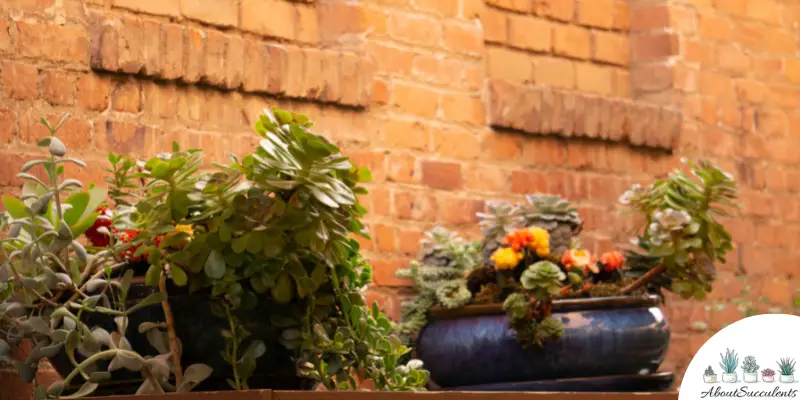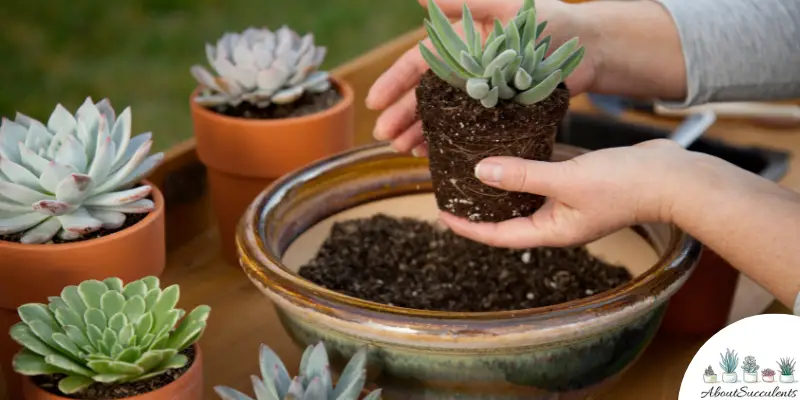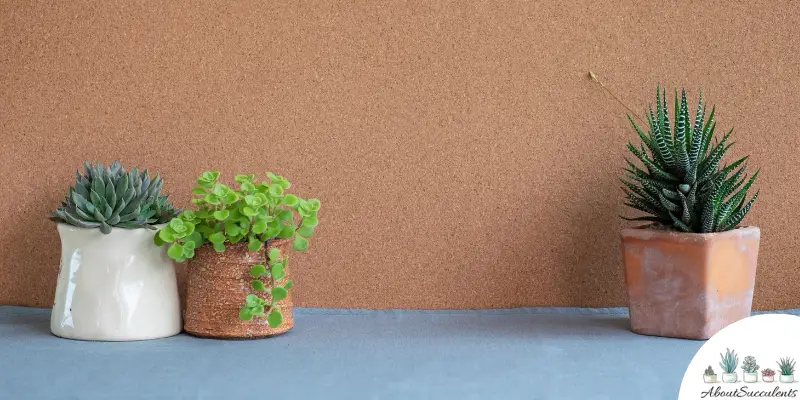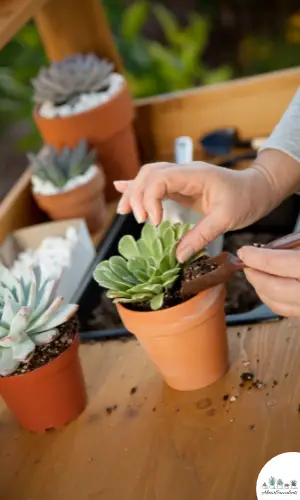
For plant lovers, there is nothing more rewarding than seeing your succulents grow strong and healthy. There will come a time when your succulent grows too big that you will have to repot or transfer it to another container.
If your pot is too small, the succulent’s roots won’t have enough room to grow. Likewise, the soil will not have the proper air circulation that’s needed to remove moisture.
What Is Repotting?
Repotting is the act of transferring a plant to a larger pot for the purpose of providing it with the proper conditions and a sustainable environment for growth.
It’s a simple process that can be daunting for new and experienced plant lovers. If you repot a healthy succulent the wrong way, you will end up killing it in the process.
The good news is that we’ve written this article to teach fledgling horticulturists how to repot. After going through our step-by-step guide, you’ll have the confidence of an expert and be prepared to transfer your succulent plant to its new home.
There are two ways to repot. The first is to transfer the plant to a new pot filled with fresh soil mix. The second is to change the soil without transplanting it to a new pot.
Follow our step-by-step guide to keep your succulents alive and thriving for a long time.
Step-By-Step Guide To Repotting Succulents

Before you start repotting, prepare all the materials you need including your plant, a new pot with drainage holes, fresh succulent soil mix, water, shears, and gloves.
You also have to make sure that you have the right pot for your succulent.
We recommend that you choose a pot that’s made either of unglazed ceramic or terracotta. These types of pots allow moisture to escape along its sides so that the soil can dry out faster.
As you well know, keeping the roots immersed in a moistened environment for a long period of time will cause them to rot. Once the roots rupture, an infection can set in; compromising the health of your succulent.
Also, check that the bottom of the pot has a drain hole with a mesh net to allow excess water to escape.
If you are repotting a cactus, make sure to wear gloves and use a kitchen tong so you can complete the process without getting hurt.
Step 1: Water your succulent thoroughly a day or two before your scheduled repotting date.
This simple hack will make it easier for you to remove the plant from its pot. It is also important to hydrate your succulent before repotting to lessen the amount of stress your plant will undergo during the process.
Step 2: Gently remove the succulent from the pot.
Turn the pot sideways while holding it at the base. Try loosening the soil with a stick. Gently pull the plant out of the pot. If the roots are tightly wounded and your plant cannot be removed by pulling, you may opt to break the pot.
Step 3: Clean the roots.
Remove as much soil as you can from the roots by gently brushing or tapping them. Handle the tender roots with care. Use sharp shears to cut off all the brown, black, or damaged roots.
If your plant is severely root bound, trim about ⅔ of the root mass. Wipe the roots with a damp cloth. Air-dry the plant in a cool place for 3 to 5 days.
Step 4: Replant the succulent in a new pot that is no more than 2 sizes bigger than the old one.
If the pot is too big, your plant may suffer from root rot. Fill ⅔ of the pot with succulent soil or free-draining mix. Place the plant at the center and add more soil until the roots are fully covered. Make sure that the leaves are sitting on top of the soil to avoid rotting.
Step 5: Gently press the soil to remove air pockets.
Water lightly, just enough to moisten the soil. Place the pot in a cool and shaded area. Leave the plant undisturbed for a few days. Avoid overwatering to avoid damaging the roots.
What To Do After Repotting Your Succulent

After transplanting your succulent, it will undergo an adjustment period. Do not worry if your plant appears weak and thirsty. Refrain from watering your plant until 7 days after repotting. This will allow the roots to fully recover from the stress of getting transplanted.
Succulent soil mix contains adequate nutrients. Do not fertilize your plant for six weeks to prevent damage.
When Is The Best Time to Repot?
Repotting at the right time is essential to the health of your succulents. You cannot just transplant on a whim because it can cause irreversible damage to your cherished plants.
The best time to repot is before the growing season starts. By doing so, you allow your succulent to acclimate to its new home.
If your plant is summer-dormant, repot it in the fall. If your succulent is winter-dormant, you may repot it in the spring.
Here are the telltale signs that it is time to repot your succulents.

The plant is starting to outgrow its pot.
It is time to repot when you see roots coming out of the drainage holes. This means that there is no more room for your plant to grow so it needs a bigger pot.
The plant starts to droop and looks unhealthy even if you give it sufficient water and sun exposure.
This means that your soil is due for a change because it no longer provides the nutrients your plant needs to stay healthy.
Your succulent stops growing.
If your succulent appears healthy but is not growing after the dormant phase, it could mean that the soil lacks nutrients or the roots no longer have space to grow.
The soil does not get soaked when you water the plant.
When the water drains too quickly, it means that there are too many roots already and there is too little soil left in the pot.
Many offsets have grown around the base of the plant.
When this happens, the offsets need to be separated from the mother plant and given their own place to propagate.
Your succulent looks very sick.
This is an indication of overwatered and rotting roots so an emergency repotting is necessary to save your plant.
Succulents mature out of their pots in varying time frames. Most varieties of succulents should be repotted between 12 and 18 months.
There are slow-growing succulents that can thrive in their pots for a few years before it requires transplanting. For these types of succulents, make sure to change the soil regularly to keep them well-fed with nutrients.
If your plant has wilted, do not repot right away. Soak the soil in water and wait for it to perk back up before repotting. Also, do not repot during extreme weather to avoid stressing the plant out.
Conclusion
Repotting your indoor succulents is an important part of plant maintenance. When you do it correctly and at the right time, your plants will flourish.
When you repot, you ensure your succulent will have enough space and soil to grow its roots. It also allows you to propagate your succulents and replace your old soil depleted with nutrients.
Remember the importance of timing. Succulents are living things. Like you and I, when we transfer to a new city, we need time to get used to the surroundings and the environment before we can resume our daily lives.
You need to give your plants ample time to recover from transplant shock before their growing season takes off.
Last Updated on June 28, 2022 by Sofia Lara